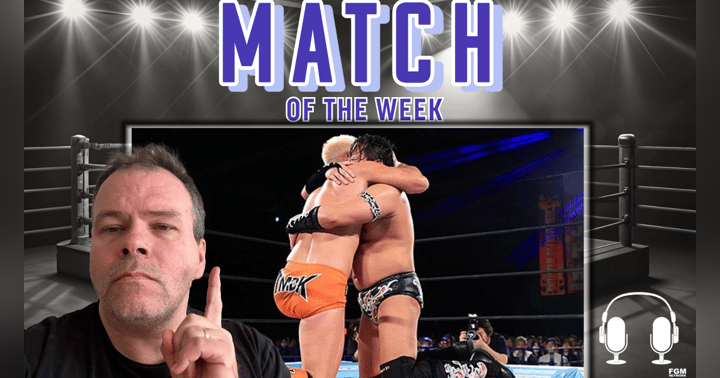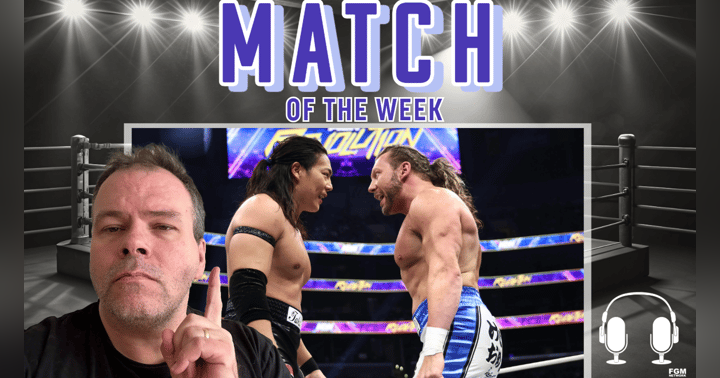Queen of Villains Final Episode: A Clash of Heroes, Villains, and Perspectives

Dump Matsumoto didn't just break the mold—she set it on fire and cackled as it burned.
The final episode of Queen of Villains tied together everything we’ve already explored over the course of this fascinating and groundbreaking series. From the early days of Dump Matsumoto’s rise to her pivotal confrontation with Chigusa Nagayo, the show came full circle in the final episode, much of which is a recreation of the famous 1985 hair vs. hair match, and revisits themes of power, identity, and pro wrestling’s impact on its performers and audiences alike in the ‘80s.
This episode, in particular, stood as the most satisfying of the series, bringing the narrative to a crescendo that resonated long after the credits rolled.
The actual match: Chigusa Nagayo vs. Dump Matsumoto (Hair vs. Hair, 8/28/1985)
The Pivotal Press Conference: Dump Matsumoto, Fully Realized
The episode kicked off with a tense and unforgettable press conference between Dump and Chigusa. The camera captured Dump in full character, decked out in a bold pinstripe suit—an outfit that screamed power and defiance. Her larger-than-life persona was on full display as she shocked the audience by decapitating a chicken with scissors. This act of aggression served not only as a statement for the upcoming match but also as a vivid reminder of how fully Dump had embraced her villainous role.
Later, we saw scenes that extended the exploration of Chigusa Nagayo's complicated relationship with her mother, a thread woven throughout the series, reinforcing the emotional stakes of the battle to come. It was as if both Dump and Chigusa were grappling with personal demons, and the press conference earlier set the tone for a showdown that was, of course, more than just a wrestling match; it was a collision of identities.
The Big Fight at Osaka Jo Hall: Pro Wrestling Depicted in Its Purest Form
Osaka Jo Hall looked magnificent on camera, and the visuals leading up to the match were just as striking. The final episode treated viewers to a seamless montage of highlights from the careers of both Dump and Chigusa, building anticipation for what was to come. The introductions, the entrances, the atmosphere—all of it was presented with a cinematic quality that brought the event to life.
The match itself was the heart of the episode, and it was where Queen of Villains truly shined. The wrestling itself was broken down to its most essential, functional parts of the match, allowing the audience to see the & absorb the nuances of each move, each strike, and each emotional beat. This attention to detail made it clear that this was not just entertainment; it was storytelling through athleticism.
For Western audiences, this series offered something unprecedented: an unfiltered, Japanese perspective on the world of professional wrestling.
In one memorable moment, Dump swung her signature trash can, the ittokan, a brutal foreign object that had become synonymous with her character and later with Aja Kong.
Lioness Asuka’s reaction in this scene, when she claims, “This is not pro wrestling,” spoke volumes about the tensions within the sport itself—the line between art and spectacle, between villainy and performance.
Villains & Heroes
As the action unfolded throughout the episode, we’re left to ask: Who is it that truly turn us into villains or heroes? Is it our parents? Is it society? Or is it the choices we make ourselves? These questions lingered as we witnessed the collapse of the iconic Crush Gals. When Chigusa declared, “I’m always alone,” it was a poignant reflection on the isolation that can come with being in the spotlight, a theme explored in previous episodes but crystallized here.
Additionally, Queen of Villains didn’t shy away from the raw emotions of its stars. During Jaguar Yokota’s announcement of her retirement, followed by Lioness Asuka’s visible frustration, highlighted the intense personal costs of life in the ring these wrestlers really did (and do) face.
Meanwhile, the reunion of the Beauty Pair and Jackie Sato’s return to wrestling in this episode offered a brief but bittersweet reminder of how fleeting yet impactful these moments of camaraderie could be.
A Legacy Solidified: Why “Queen of Villains” is a Must-Watch
This final episode delivered not just on action but on emotional depth, and in doing so, encapsulated why Queen of Villains was more than just a documentary about professional wrestling. It was an intimate, raw portrayal of life in the ring, capturing the highs, the lows, and everything in between. It was a reminder that these athletes were more than performers—they were humans with struggles, triumphs, and stories worth telling.
For Western audiences, this series offered something unprecedented: an unfiltered, Japanese perspective on the world of professional wrestling. Queen of Villains did what no other documentary had done before—it captured Japanese pro wrestling “in action,” not just through the matches, but through the eyes of those who lived it. It provided context, history, and emotion that Western audiences may not have fully grasped without understanding the source. This was what other people saw. This was what other people felt. And this was what Queen of Villains offered to anyone who wanted to understand the deeper layers of this sport. In many ways, Queen of Villains felt reminiscent of popular sports dramas like Hajime no Ippo or Slam Dunk, both also on Netflix now.
It was the kind of series you would want to go out of your way to watch—and then watch again. It was educational, it was compelling, and it was an essential piece of pro wrestling history that will stand the test of time.
But don’t take my word for it—watch for yourself.
-----
You can read all of the other episode reviews below.
Episode 1
Episode 2
Episode 3
Episode 4







